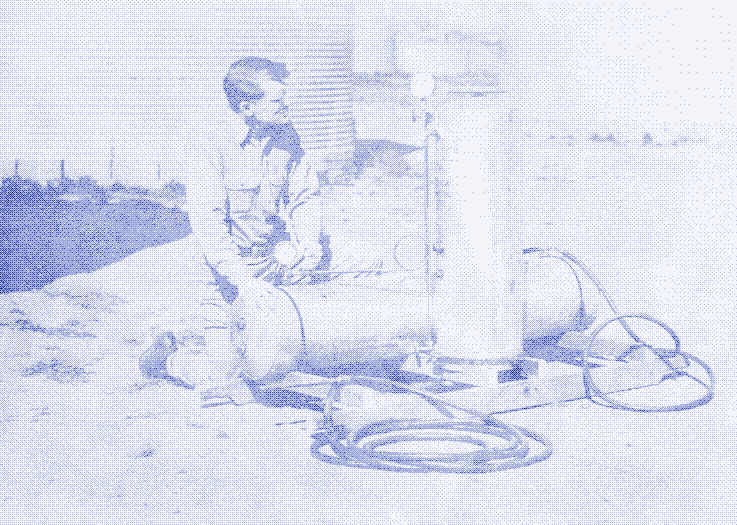
Going off-grid? Think twice before you invest in a battery system. Compressed air energy storage is the sustainable and resilient alternative to batteries, with much longer life expectancy, lower life cycle costs, technical simplicity, and low maintenance. Designing a compressed air energy storage system that combines high efficiency with small storage size is not self-explanatory, but a growing number of researchers show that it can be done.
Compressed Air Energy Storage (CAES) is usually regarded as a form of large-scale energy storage, comparable to a pumped hydropower plant. Such a CAES plant compresses air and stores it in an underground cavern, recovering the energy by expanding (or decompressing) the air through a turbine, which runs a generator.
Unfortunately, large-scale CAES plants are very energy inefficient. Compressing and decompressing air introduces energy losses, resulting in an electric-to-electric efficiency of only 40-52%, compared to 70-85% for pumped hydropower plants, and 70-90% for chemical batteries.
The low efficiency is mainly since air heats up during compression. This waste heat, which holds a large share of the energy input, is dumped into the atmosphere. A related problem is that air cools down when it is decompressed, lowering electricity production and possibly freezing the water vapour in the air. To avoid this, large-scale CAES plants heat the air prior to expansion using natural gas fuel, which further deteriorates the system efficiency and makes renewable energy storage dependent on fossil fuels.
Why Small-scale CAES?
In the previous article, we outlined several ideas — inspired by historical systems — that could improve the efficiency of large-scale CAES plants. In this article, we focus on the small but growing number of engineers and researchers who think that the future is not in large-scale compressed air energy storage, but rather in small-scale or micro systems, using man-made, aboveground storage vessels instead of underground reservoirs. Such systems could be off-the-grid or grid-connected, either operating by themselves or alongside a battery system.
The main reason to investigate decentralised compressed air energy storage is the simple fact that such a system could be installed anywhere, just like chemical batteries. Large-scale CAES, on the other hand, is dependent on a suitable underground geology. Although there are more potential sites for large-scale CAES plants than for large-scale pumped hydropower plants, finding appropriate storage caverns is not as easy as was previously assumed.123
![Experimental set-up of small-scale compressed air energy storage system. Source: [^27]](https://solar.lowtechmagazine.com/2018/05/ditch-the-batteries-off-grid-compressed-air-energy-storage/images/dithers/set-up-small-scale-compressed-air-energy-storage-system_dithered.png)
Compared to chemical batteries, micro-CAES systems have some interesting advantages. Most importantly, a distributed network of compressed air energy storage systems would be much more sustainable and environmentally friendly. Over their lifetimes, chemical batteries store only two to ten times the energy needed to manufacture them. 4 Small-scale CAES systems do much better than that, mainly because of their much longer lifespan.
Compared to chemical batteries, a distributed network of compressed air energy storage systems would be much more sustainable and environmentally friendly
Furthermore, they do not require rare or toxic materials, and the hardware is easily recyclable. In addition, decentralised compressed air energy storage doesn’t need high-tech production lines and can be manufactured, installed and maintained by local business, unlike an energy storage system based on chemical batteries. Finally, micro-CAES has no self-discharge, is tolerant of a wider range of environments, and promises to be cheaper than chemical batteries. 5

Although the initial investment cost is estimated to be higher than that of a battery system (around $10,000 for a typical residential set-up), and although above-ground storage increases the costs in comparison to underground storage (the storage vessel is good for roughly half of the investment cost), a compressed air energy storage system offers an almost infinite number of charge and discharge cycles. Batteries, on the other hand, need to be replaced every few years, which makes them more expensive in the long run. 56
Challenge: Limiting Storage Size
However, decentralised CAES also faces important challenges. The first is the system efficiency, which is a problem in large- and small-scale systems alike, and the second is the size of the storage vessel, which is especially problematic for small-scale CAES systems.
Both issues make small-scale CAES systems unpractical. Sufficient space for a large storage vessel is not always available, while a low storage efficiency requires a larger solar PV or wind power plant to make up for that loss, raising the costs and lowering the sustainability of the system.
To make matters worse, system efficiency and storage size are inversely related: improving one factor is often at the expense of the other. Increasing the air pressure minimizes the storage size but decreases the system efficiency, while using a lower pressure makes the system more energy efficient but results in a larger storage size. Some examples help illustrate the problem.
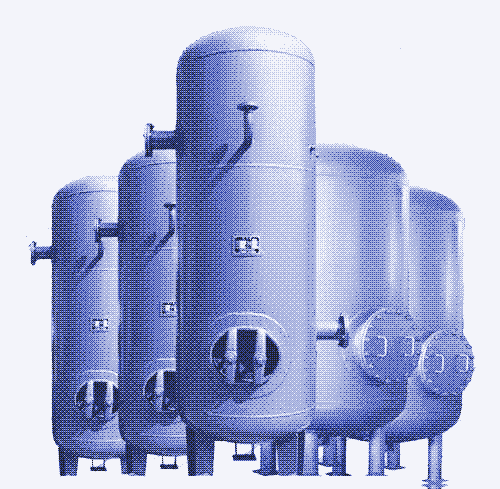
A simulation for a stand-alone CAES aimed at unpowered rural areas, and which is connected to a solar PV system and used for lighting only, operates at a relatively low air pressure of 8 bar and obtains a round-trip efficiency of 60% – comparable to the efficiency of lead-acid batteries. 7
However, to store 360 Wh of potential electrical energy, the system requires a storage reservoir of 18 m3, the size of a small room measuring 3x3x2 metres. The authors note that “although the tank size appears very large, it still makes sense for applications in rural areas”.
System efficiency and storage size are inversely related: improving one factor is often at the expense of the other.
Such a system may indeed be beneficial in this context, especially because it has a much longer lifespan than chemical batteries. However, a similar configuration in an urban context with high energy use is obviously problematic. In another study, it was calculated that it would take a 65 m3 air storage tank to store 3 kWh of energy. This corresponds to a 13 metre long pressure vessel with a diameter of 2.5 metres, shown below. 8
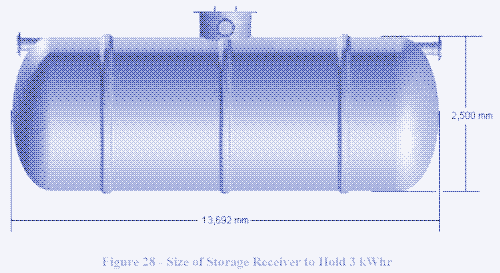
Furthermore, average household electricity use per day in industrialised countries is much higher still. For example, in the UK it’s slightly below 13 kWh per day, in the US and Canada it’s more than 30 kWh. In the latter case, ten such air pressure tanks would be required to store one day of electricity use.
Small-scale CAES systems with high pressures give the opposite results. For example, a configuration modelled for a typical household electrical use in Europe (6,400 kWh per year) operates at a pressure of 200 bar (almost 4 times higher than the pressure in large-scale CAES plants) and achieves a storage volume of only 0.55 m3, which is comparable to batteries. However, the electric-to-electric efficiency of this set-up is only 11-17%, depending on the size of the solar PV system. 9
Two Strategies to Make Micro CAES work
These examples seem to suggest that compressed air energy storage makes no sense as a small-scale energy storage system, even with a reduction in energy demand. However, perhaps surprisingly to many, this is not the case.
Small-scale CAES systems cannot follow the same approach as large-scale CAES systems, which increase storage capacity and overall efficiency by using multi-stage compression with intercooling and multi-stage expansion with reheating. This method involves additional components and increases the complexity and cost, which is impractical for small-scale systems.
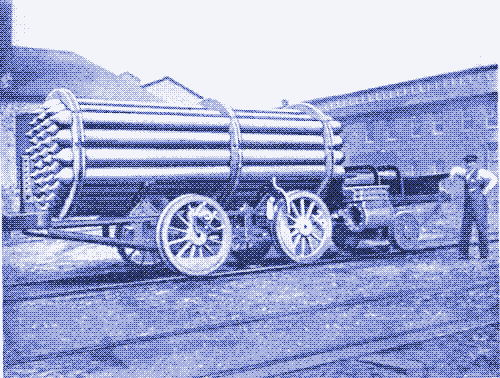
The same goes for “adiabatic” processes (AA-CAES), which aim to use the heat of compression to reheat the expanding air, and which are the main research focus for large-scale CAES. For a micro-CAES system, it’s very important to simplify the structure as much as possible. 510
This leaves us with two low-tech strategies that can be followed to achieve similar storage capacity and energy efficiency as lead-acid batteries. First, we can design low pressure systems which minimize the temperature differences during compression and expansion. Second, we can design high pressure systems in which the heat and cold from compression and expansion are used for household applications.
Small-scale, High Pressure
Small-scale compressed air energy storage systems with high air pressures turn the inefficiency of compression and expansion into an advantage. While large-scale AA-CAES aims to recover the heat of compression with the aim of maximizing electricity production, these small-scale systems take advantage of the temperature differences to allow trigeneration of electrical, heating and cooling power. The dissipated heat of compression is used for residential heating and hot water production, while the cold expanding air is used for space cooling and refrigeration. Chemical batteries can’t do this.
Small-scale, high pressure systems use the dissipated heat of compression for residential heating and hot water production, while the cold expanding air is used for space cooling and refrigeration.
In these systems, the electric-to-electric efficiency is very low. However, there are now several efficiencies to define, because the system also supplies heat and cold. 1011 Furthermore, this approach can make several electrical appliances unnecessary, such as the refrigerator, the air-conditioning, and the electric boiler for space and water heating. Since the use of these appliances is often responsible for roughly half of the electricity use in an average household, a small-scale CAES system with high pressure has lower electricity demand overall.
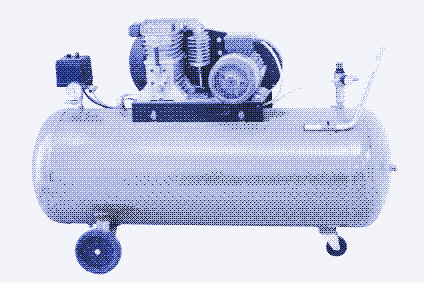
High pressure systems easily solve the issue of storage size. As we have seen, a higher air pressure can greatly reduce the size of a compressed air storage vessel, but only at the expense of increased waste heat. In a small-scale system that takes advantage of temperature differences to provide heating and cooling, this is advantageous. Therefore, high pressure systems are ideal for small-scale residential buildings, where storage space is limited and where there is a large demand for heat and cold as well as electricity. The only disadvantages are that high pressure systems require stronger and more expensive storage tanks, and that extra space is required for heat exchangers.
![Experimental set-up of a micro CAES system. Source: [^30]](https://solar.lowtechmagazine.com/2018/05/ditch-the-batteries-off-grid-compressed-air-energy-storage/images/dithers/Experimental-set-up-of-a-micro-CAES-system_dithered.png)
Several research groups have designed, modeled and built small-scale combined heat-and-power CAES units which provide heating and cooling as well as electricity. The high pressure system with a storage volume of only 0.55 m3 that we mentioned earlier, is an example of this type of system. 9 As noted, its electrical efficiency is only 11-17%, but the system also produces sufficient heat to produce 270 litres of hot water per day. If this thermal source of energy is also taken into account, the “exergetic” efficiency of the whole system is close to 70%. Similar “exergy” efficiencies can be found in other studies, with systems operating at pressures between 50 and 200 bar. 1112
Heat and cold from compression and expansion can be distributed to heating or cooling devices by means of water or air. The setup of an air cycle heating and cooling system is very similar to a CAES system, except for the storage vessel. Air cycle heating and cooling has many advantages, including high reliability, ease of maintenance, and the use of a natural refrigerant, which is environmentally benign. 11
Small-scale, Low Pressure
The second strategy to achieve higher efficiencies and lower storage volumes is exactly the opposite from the first. Instead of compressing air to a high pressure and taking advantage of the heat and cold from compression and expansion, a second class of small-scale CAES systems is based on low pressures and “near-isothermal” compression and expansion.
Below air pressures of roughly 10 bar, the compression and expansion of air exhibit insignificant temperature changes (“near-isothermal”), and the efficiency of the energy storage system can be close to 100%. There is no waste heat and consequently there is no need to reheat the air upon expansion.

Isothermal compression requires the least amount of energy to compress a given amount of air to a given pressure. However, reaching an isothermal process is far from reality. To start with, it only works with small and/or slowly cycling compressors and expanders. Unfortunately, typical industrial compressors are not made for maximum efficiency but for maximum power and thus work under fast-cycling, non-isothermal conditions. The same goes for most industrial expanders. 1314
Below air pressures of 10 bar, compression and expansion of air exhibit insignificant temperature changes and the efficiency can be close to 100%.
The use of industrial compressors and expanders explains in large part why the low pressure CAES systems mentioned at the beginning of this article have such large storage vessels. Both systems are based on devices which are operated outside of their optimal or rated conditions. 15 Because inefficiencies multiply during energy conversions, even relatively small differences in the efficiency of compressors and expanders can have large effects. For example, a variation in device efficiency from 60% to 80% results in a system efficiency from 36% to 64%, respectively.
New Types of Compressors and Expanders
Because the performance of a compressor and an expander significantly impact the overall efficiency of a small-scale CAES system, several researchers have built their own compressors and expanders, which are especially aimed at energy storage. For example, one team designed, built and examined a single-stage, low power isothermal compressor that uses a liquid piston. 13 It operates at a very low compression rate (between 10-60 rpm), which correspond to the output of solar PV panels, and limits temperature fluctuation during compression and expansion to 2 degrees Celsius.
The low-cost device has minimum moving parts and obtains efficiencies of 60-70% at 3 to 7 bar pressure. 13 This is a very high efficiency for such a simple device, considering that a sophisticated three-stage centrifugal compressor, used in large-scale CAES systems or in industrial settings, is roughly 70% efficient. Furthermore, the researchers state that the efficiency is limited by the off-the-shelf motor that they use to power their compressor. Indeed, another research team achieved 83% efficiency. 16
![A scroll compressor. Source: [^30]](https://solar.lowtechmagazine.com/2018/05/ditch-the-batteries-off-grid-compressed-air-energy-storage/images/dithers/scroll-compressor_dithered.png)
Another novelty is the use of scroll compressors, which are the types of compressors that are now used in refrigerators, air-conditioning systems, and heat pumps. Both fluid piston and scroll compressors have a high area-to-volume ratio, which minimizes heat production, and can easily handle two-phase flow, which means that they can also be used as expanders. They are also lighter and less noisy than typical reciprocating compressors. 14
Varying Air Pressure
Although compressors and expanders are the most important determinants of system efficiency in small-scale CAES systems, they are not the only ones. For example, in every compressed air energy storage system, additional efficiency loss is caused by the fact that during expansion the storage reservoir is depleted and therefore the pressure drops. Meanwhile, the input pressure for the expander is required to vary only in a minimal range to assure high efficiency.
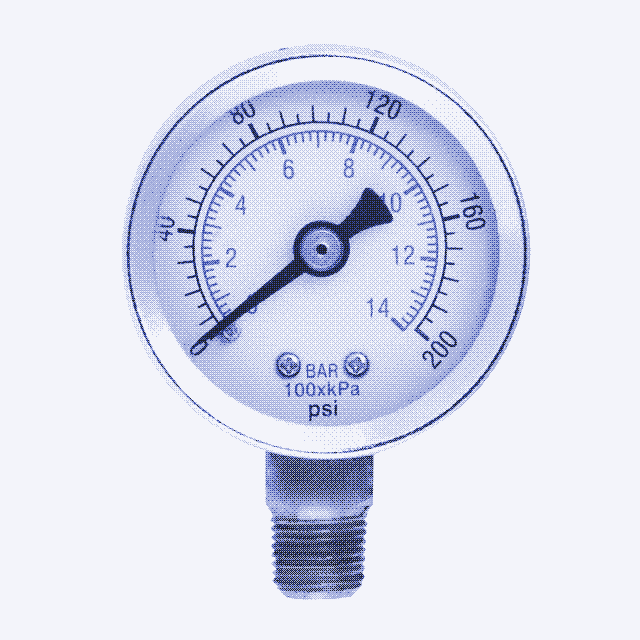
This is usually solved in two ways, although neither is really satisfactory. First, air can be stored in a tank with surplus pressure, after which it is throttled down to the required expander input pressure. However, this method — which is used in large-scale CAES — requires additional energy use and thus introduces inefficiency. Second, the expander can operate at variable conditions, but in this case efficiency will drop along with the pressure while the storage is emptied.
During expansion the storage reservoir is depleted and therefore the pressure drops.
With these problems in mind, a team of researchers combined a small-scale CAES with a small-scale pumped hydropower plant, resulting in a system that maintains a steady pressure during the complete discharge of the storage reservoir. It consists of two compressed air tanks that are connected by a pipe attached to their lower portions: each of these have separate spaces for air (below) and water storage (above). The configuration maintains a head of water by means of a pump, which consumes 15% of the generated power. However, in spite of this extra energy use, the researchers managed to increase both the efficiency and the energy density of the system. 11
Off-the-Grid Power Storage
To give an idea of what a combination of the right components can achieve, let’s have a look at a last research project. 17 It concerns a system that is based on a highly efficient, custom-made compressor/expander, which is directly coupled to a DC motor/generator. Apart from its efficient components, this CAES project also introduces an innovative system configuration. It doesn’t use one large air storage tank, but several smaller ones, which are interconnected and computer-controlled.
The setup consists of the compression/expansion unit coupled to three small (7L) cylinders, previously used as air extinguishers, and operates at low pressure (max 5 bar). The storage vessels are connected via PVC pipework and brass fittings. To control the air-flow, three computer-controlled air valves are installed at the inlet of each cylinder. The system can be extended by adding more pressure vessels. 17
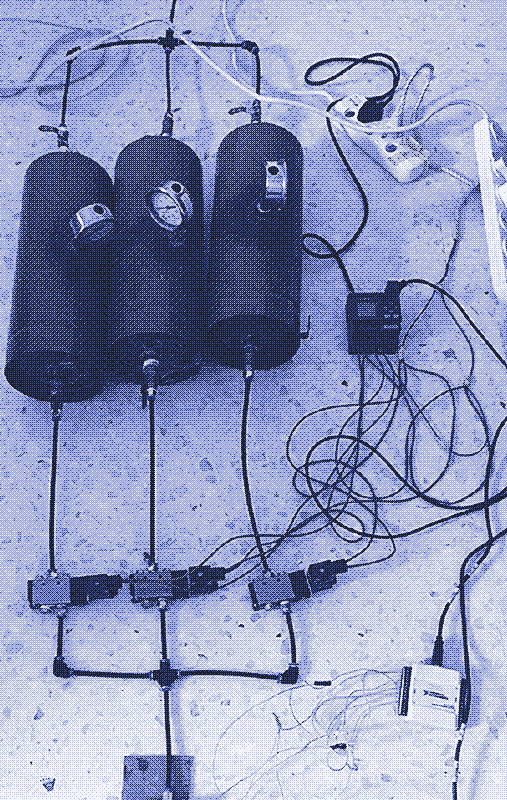
A modular configuration results in a higher system efficiency and energy density for mainly two reasons. First, it helps more effective heat transfer to take place, because every air tank acts as an additional heat exchanger. Second, it allows better control over the discharge rate of the storage reservoir. The cylinders can be discharged either in unison to satisfy a demand for high power density (more power at the cost of a shorter discharge time), or they can be discharged sequentially to satisfy a demand for high energy density (longer discharge time at the cost of maximum power).
By discharging modular storage cylinders sequentially, the discharge time can be greatly increased, making the system comparable to lead-acid batteries in terms of energy density.
By discharging the cylinders sequentially, the discharge time can be greatly increased, making the system comparable to lead-acid batteries in terms of energy density. Based on their experimental set-up, the researchers calculated the efficiencies for different starting pressures and numbers of cylinders. They found that 57 interconnected cylinders of 10 litre each, operating at 5 bar, could fulfill the job of four 24V batteries for 20 consecutive hours, all while having a surprisingly small footprint of just 0.6 m3.
Interestingly, the storage capacity is 410 Wh, which is comparable to the 360 Wh rural system noted earlier, which requires an 18 m3 storage vessel — that’s thirty times larger than the modular storage system.
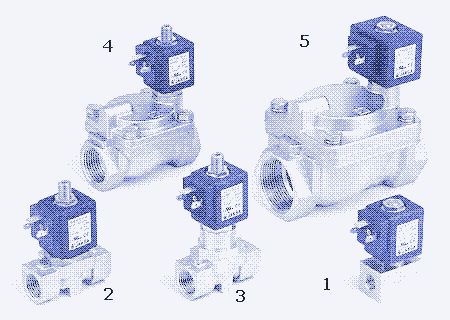
The electric-to-electric efficiency for the 3-cylinder set-up reached a peak of 85% at 3 bar pressure, while the estimated efficiency for the 57-cylinder set-up is 75%. These are values comparable to lithium-ion batteries, but adding more storage vessels or operating at higher pressures introduces larger losses due to compression, heat, friction and fittings. 1718
Nevertheless, when I e-mailed Abdul Alami, the main author of the study, thinking that the results sounded too good to be true, he told me that the figures were actually overly conservative: “We stuck to low pressures to achieve near-isothermal compression and to ensure safe operation. Operating at pressures higher than 10 bar would create serious thermal losses, but a pressure of 7-8 bar may be beneficial in terms of energy and power density, though maybe not in terms of efficiency.”
Build it Yourself?
In conclusion, small-scale compressed air energy storage could be a promising alternative to batteries, but the research is still in its early stages — the first study on small-scale CAES was published in 2010 — and new ideas will continue to shed light on how best to develop the technology. At the moment, there are no commercial products available, and setting up your own system can be quite intimidating if you are new to pneumatics. Simply getting hold of the right components and fittings is a headache, as these come in a bewildering variety and are only sold to industries.
However, if you’re patient and not too unhandy, and if you are determined to use a more sustainable energy storage system, it is perfectly possible to build your own CAES system. As the examples in this article have shown, it’s just a bit harder to build a good one.
There’s more ideas for small-scale CAES systems in the previous article: History and Future of the Compressed Air Economy.
Reactions
To make a comment, please send an e-mail to solar (at) lowtechmagazine (dot) com. Your e-mail address is not used for other purposes, and will be deleted after the comment is published. If you don’t want your real name to be published, sign the e-mail with the name you want to appear.
Reactions
Jan Steinman
Excellent introduction to the topic, that makes me want to go out and build one!
All your examples appear to use photovoltaic panels, which have the two inefficiencies of photon-to-electricity and then electricity to motion. Do you know of any efforts to harness solar thermal for this purpose, perhaps through Stirling engines?
kris de decker
@ luk
You are right. So if we assume a compressor efficiency of 70% then electric-to-electric efficiency is 77.5%, not 85%. I will correct the article.
Baumm
Compressed air is still popular for powering tools. Most powered tools are available in compressed air, battery, or AC variant, therefore I really see this CAES idea ideal for the hobbyist.
My garage for example is not connected to the grid, so no electricity. Battery tools were so far the solution, and I was even thinking to add PV to charge them, but to go all compressed air seems way more intelligent.
Just need to invent micro-expander to light the garage now. LEDs need very little power, and need to be cooled for maximum efficiency and durability anyway ;-)
Israel Walker
An article you and your readers might find interesting on this subject:
http://www.tested.com/tech/453794-how-amish-are-adopting-power-tools-and-electricity-bit-bit/
Also interesting is the comments which reveal the commenters and to a lesser degree the author, do not understand that Amish are not against electricity: they are against community networks controlled by members outside the community, they are localists not luddites. They have little problem with technology as long as it doesn’t make the user dependent on those outside the community.
Also this: https://en.wikipedia.org/wiki/Fireless_locomotive
Fireless locos generally proved themselves more useful than compressed air locomotives, at least in part because of a mixing valve mixed air into the steam jet to create a larger volume of working fluid. If you are already designing a heat pump running on water vapor, water vapor/liquid phase shift, and running high pressures, I suspect some applications would be benefit from steam, rather than compressed air.
Mackey McLelland
Maybe you could do a small series on battery storage of energy - gravity, thermal etc.
I once visited the island of AEro in Denmark. They have a district heating system which is based on a huge insulated tank full of molten salt. They heat it up through the summer with excess electricity from their PV and wind generators and then use it to heat the town’s houses and water through the winter. Extremely effective…
Chris harries
For a while I contemplated this as an energy source for a bicycle, the idea being that the (modified) bike frame would act as the containment vessel for compressed air. This all looked good and easy to do and would have higher energy performance than a battery electric-assist bike. The stumbling block, though, is safety. Any highly compressed gas needs a very robust containment vessel. A sudden rupturing of any containment vessel or lines can be disastrous. Weight becomes a problem.
But the idea of using compressed air as a stationery energy storage needs to be pursued further. As it almost certainly will be.
Matt
Amish use compressed air systems and have for years. Their Wells and washing machines run on air. It’s great and been over 20 years that I’ve known of it…
Wim
Thanks for the article, as always inspiring.
One remark:
At the end it says… Build it Yourself?
In conclusion, …. Simply getting hold of the right components and fittings is a headache, as these come in a bewildering variety and… are only sold to industries….?
Entering “electric air valve” in Ebay seems to give a list of possible valves… Fittings, storage and pipes can be had from a local plumbing store or scrap dump?
Arduinos etc. are fairly simple to program and take very little power.
Bryan H.
Is there any reason why compressed air storage systems aren’t kept underwater (i’m thinking a pond, lake or undersea)? It seems like the continuous water pressure may take care of some of the problems related to pressure in the chamber dropping as the air is used (assuming the storage chamber walls are flexible).
order99
This article is assuming the use of compressed air for conversion to electricity…given that premise, is there any way to convert the temperature differential directly into electricity as well, either through modified Peltier coolers or (as a Low-Tech method) a Stirling Engine sensitive enough to run off of the ambient temp changes?
Jim Baerg
Bryan: I think that is perfectly possible IF you have quite deep water close to shore. It takes 10 m water depth to give 1 bar of extra pressure, so for 10 bar pressure you need a water depth of 100 m. For 100 bar 1 km water depth is needed. An exercise for the student is to determine where these conditions are available.
Kris:
I’m a bit surprised that the technology from this company (http://www.lightsail.com/ ) wasn’t mentioned in this article or the previous one. The trick of spraying water into the air being compressed or expanded to absorb or release heat & so keep the compression/expansion near isothermal sounds like a good way to increase the efficiency of CAES. I recall that the claimed efficiency was at least as good as pumped hydro, but I can’t find the efficiency figure on that website now.
Energy storage as good as claimed by the Lightsail company, would greatly reduce my skepticism about the worth of wind energy. Since energy demand is higher during daylight hours, solar is still of considerable use without storage in the large part of the world where seasonal variation in sunlight is modest.
Ed
I was left thinking that a passive solar approach to heating tanks (and thereby increasing the pressure) could be used as a way to boost output if the energy usage was cyclical. Day and night temperature variances would seem to be a natural component of any rural design along with direct solar heating.
Oliver Evans
http://windcompressor.com/index.html
wind powered air compressors are built by the Amish in Maine. I have seen them at an Amish cabinet shop in Choteau Oklahoma. They pump air into a large propane tank that is used to power the air tools in the shop. They work great!
Karl
I can’t access the original paper [27] but 410Wh energy from 570l of stored air is higher than I would expect. It is about 6.5x what the formula at the Wikipedia page on Compressed Air Energy Storage says is the theoretical maximum in the case of isothermal storage.
Why is that not an appropriate formula to apply in this case? What am I misunderstanding?
Here’s my units session, with the Wikipedia formula giving the maximum as being 63Wh:
You have: 5 bar 570 l ln(1 atmosphere / 5 bar) + ((5 bar - 1 atmosphere) 570 l)
You want: watt hour
/ -0.015810721
Cristián Lávaque
@Kris
Great article, again!
About heat during compression/decompression, this could be used directly, avoiding the need of electricity later for those same uses. Most homes would have a water heater and a refrigerator.
The compression part could have a heat exchanger to heat up a water tank, and the decompression part have one to cool an insulated box/room. They’d avoid energy losses and improve the overall efficiency of the system.
But that’s assuming that the home would have used electricity for cooling and heating, for which there are other efficient approaches.
Pr. Théodose
Combining a windmill-powered rope pump [1] and a recirculating trompe (with the air reservoir on the ground) could give us a low-tech, high-efficiency system at moderate pressures. Since both the maximum pressure achievable and the wind power available increase with the height of the windmill, the whole system can scale up pretty well.
[1] https://web.archive.org/web/20090521195033/http://www.gamos.demon.co.uk/just%20gamos%20homepage/henkfnl2.htm">http://www.gamos.demon.co.uk/just%20gamos%20homepage/henkfnl2.htm">https://web.archive.org/web/20090521195033/http://www.gamos.demon.co.uk/just%20gamos%20homepage/henkfnl2.htm
Logan Simmering
“So-called “Underwater CAES” is a research topic. The advantage is a steady pressure, but anything that’s built underwater, especially in salt water, is going to have a shorter lifespan. And it makes CAES dependent on geography again”
If your already building off shore windmills, it seems like a good idea though.
luk
@bobby mobby I think the battery comparison in the quoted article is broken!
The reverence battery has a voltage level of 12V not 24V as stated
1 cylinder has 0.32 Wh in 0.026h max!
4 batteries have 1632 Wh in 20h
57 cylinder produce 18.57 Wh in 0.3h max!
sidefact: ηoverall is higher as ηmech at two different setups ;)
PS. Almost two years later :) https://www.lowtechmagazine.com/2018/05/ditch-the-batteries-off-the-grid-compressed-air-energy-storage.html#comment-6a00e0099229e88833022ad37cb70a200d-content
Patrick
doing a bit more reading, dimethyl ether (DME) may be a promising working fluid, although on a municipal scale due to complication of process to refine from methane.
John Newman
And now there’s this:
https://qz.com/1355672/stacking-concrete-blocks-is-a-surprisingly-efficient-way-to-store-energy/
Tony Martin
So we have a device that at some point produces heat which could perhaps preheat water before it goes to a hot water tank and then later produces cold which could perhaps be used to help a refrigerator. This might also improve the efficiency of the device by lowering the inlet air temp of the compressor but obviously needs some integration with household appliances.
George
Is it possible to control expander/generator efficiencies with variable input pressure by controlling the load applied to the generator?
For instance - if the expander/generator is spinning too quickly due to high pressure can you somehow put load on the generator in order to slow do the speed at which the expander is spinning?
Jean seite
This is a track I had worked on a few years ago. I was working at that time for a solar panel company. This article is giving me news ideas to increase heat recovery for home use with a simple principe.
i intend to implement the experiment 27 In the coming months and to show you my results if you are interested. But it is impossible to access to the complete document.
patrick dufour
What about a very large balloon? The presure of expansion and contracting might have some effect? If the air was hot in the ballon maybe it would rise and cool then fall increasing pressure?
Kevin
What type of turbine / generator is used in a large scale CAES system that is being reference in the article?
Sohaibnaqvi3
Dear All,
Please suggest me some tips for Excess Solar Energy Storage:
I have installed Solar Power system at my home which has the following details:
PV Modules Installed capacity= 2160KW (08modules with 270Watt/panel)
Off/On grid Inverter (Has multiple functions including Net-metering option) = 3.5KW
Deep Cycle Batteries= 04 (120Amp each)
Average Energy consumption (Load) = 15KWH (60% of this is used at night-from Grid)
Net-metering option is not available in our area. What I am asking here, Can I store excess Solar Energy as compressed air during the day time and use it at night?
What will be the compressor specifications/type for providing 9KWH during night hours?
How it can be coupled with an A.C. generator?
Is there any system already in market that meets my set-up demand?
Matthew
I wanted to research if it were possible to increase the efficiency by cycling the compressed air between the tank.
peter budd
can someone help me and direct me to where i can read about large scale energy heat storage in rocks or fluids to be used at the point when air is exiting the storage reservoir and the turbine needs to have the air warmed on exit into the turbine? thank you.
H. Stamper
Ditch the tank and just turn the coal fire generators turbines pneumatically?
Green
Kris- since publishing your article, have you any information, examples, and products that you could publish to update the article?
bobby mobby
Quick question, according to the [27] paper
“with cylinders operating fulfilling the job of four 24 V batteries for 20 consecutive hours (the bench mark battery is a Trojan U1-AGM,
http://www.trojanbattery.com/product/u1-agm/)."
When checking the specs of the batteries it mentions each stores 0.47 kWh.
Does it mean a 3 x 10l cylinder setup @ 5 bars holds 1.88 kWh ?
If yes, I’m confused with this part from the above article:
“Interestingly, the storage capacity is 410 Wh, which is comparable to the 360 Wh rural system noted earlier, which requires an 18 m3 storage vessel – that’s thirty times larger than the modular storage system.”
Bert van Brakel
How about using liquified air? It’s about a 700:1 volume ratio, can be stored at ambient pressure, only requires a container with some good insulation, can be built in most local machine shops.
I’m not in any way affiliated with these guys, but a US crowd is working on combining this with their rimdrive wind turbines to directly liquify the air (see https://keukaenergy.com/products/)
The upside is if having this supply locally it could also be used to provide refrigeration (either by direct air release or during rewarming of the liquid), and possible heating during the compression/liquification phase.
I don’t know what the smallest feasible size is, but maybe these could be installed in small local clusters of a few houses if individual household size isn’t feasible.
Vincent Bourquin
Pray allow myself to indicate you the remarkable research undertaken by Prof. Alfred Rufer at EPFL regarding this topic of energy storage using compressed air. To my knowledge, he and his staff have put a significant scientific effort to understand the way to achieve the best results for this approach. Certainly very useful to develop simple efficient devices.
Energy Fan
In the October 2020 issue of Energy and Building, someone modeled an analysis of a residential system with High Temperature Thermal Storage, Low Temp Thermal Storage, and Micro CAES (analyzed a system that stores 181 kg of air at 50 bar, seems high pressure!)
https://www.sciencedirect.com/science/article/abs/pii/S0378778820309683
bonifartius
i read this article a while ago and it has kind of stuck in my brain. yesterday i’ve wondered about if the turbochargers of cars could be used at the generator side of the setup as cheap available part? the pressure of the exhaust of cars seems to be ~5 bar, which is about the pressure of the small setup presented here. a problem might be that the volume-flow isn’t big enough in small setups to use a turbocharger turbine, though.
the reasoning for this idea is to avoid custom manufactured parts, reusing whats available (maybe even as used part).
Seth K
–> “However, to store 360 Wh of potential electrical energy, the system requires a storage reservoir of 18 m3, the size of a small room measuring 3x3x2 metres. The authors note that “although the tank size appears very large, it still makes sense for applications in rural areas”.”
I was considering the options for fences include sprayed concrete, earthbags, cob, and stabilized rammed earth when I thought what if:
Two masonry fences were built next to each other.
Capped with a masonry arch or other cap.
Possible vapor lining inside if needed.
Would such a fence be strong enough to work as low pressure compressed air energy storage? Mimicking an artificial cave and serving as the fence that a homeowner would want anyways. It would also be strong enough to support solar or wind power on top of it.
The perimeter of an acre is 254.5 meters. A double fence 2 meters high with hollow space of 1 meter would equal 509 m3 of low pressure compressed air storage. This would store ~10kwh, or current US average 1/3 daily use.
Rodrigo Fernández
Hi Kris. I was thinking that, in case as much cold or heat was not needed as the excess of the CAES, the freshly compressed hot air, before entering the high pressure tank, could be cooled by heating a stirling engine, which would act as a heat exchanger with the atmosphere. The stirling, which would be geared to the compressor itself, would help it compress more air, recovering some of the energy.
For its part, the cold exhaust air would be used in the opposite area of the stirling engine, to extract energy from the heat of the surrounding air.
I know more about letters than numbers, so I don’t know how practical it could be.
Greetings.
Jérôme Collet
Hello,
I read a few days ago your April 2020 article “Off-grid compressed air energy storage”, and it interested me a lot. It is the first such comprehensive article on energy storage with artificial storage. The low pressure storage has a very good efficiency, it is bulky, but probably usable in the countryside, it is quite possible that these storages will spread in a few years. I prefer to focus on high-pressure storage.
For high-pressure storages, you immediately rule out heat storage, because it requires complex exchangers. I have a question on this subject: has it been envisaged to store heat in the air tank itself, using water? More precisely, we see in the pj (1-s2.0-S2589004221004089-main.pdf) that Lightsail Energy proposed this kind of method, by adding water in the compressed air. This method was not successful, and probably posed problems of corrosion, or abrasion by water.
This is why I wonder if it would be possible to put in the air tank, another tank, partially filled with water. When air is pumped into the air tank, it heats the small water tank until water evaporates. The evaporation takes a large amount of heat, and allows the pressure differences between the inside and outside of the tank to decrease. This heat storage by water, plus a good insulation of the air tank could provide a good efficiency.
I would like to add some remarks on the use of these storages.
In a system with renewables (and among them probably a lot of PV), a large part of the storages will last a few hours: we can therefore consider using storages that lose energy in the course of time.
What we have to store is already cheap enough that using a durable storage, with a bad efficiency, is more profitable than the opposite choice (storage with a good efficiency, but not very durable). We can make the following assumptions:
batteries costing 100$/kW.h, and lasting 1000 cycles, 100% efficiency.
electricity from PV, costing 50$/kW.h.
CAES with a 50% efficiency, negligible wear.
Then, 1 MW. h taken from the battery will cost 150$ (50 of production and 100 of wear and tear), while the one taken from the CAES will cost 100$ (because it will have been necessary to produce 2 of them).
I add 2 recent references on the subject, which you may have seen but not found useful for your article.
Barbour, Edward R., Daniel L. Pottie, and Philip Eames. “Why is adiabatic compressed air energy storage yet to become a viable energy storage option?.” Iscience (2021): 102440.
Neu, Thibault. Etude expérimentale et modélisation de la compression quasi isotherme d’air pour le stockage d’énergie en mer. Diss. Ecole nationale supérieure Mines-Télécom Atlantique, 2017.
Jean
Hi,
I’ve carefully read your article about compressed air energy storage and
also some of the studies shown in the sources.
I am planning to build a low pressure storage, firstly to experiment and
try things. I am looking for pieces around the internet, mainly the air
compressor and the expander/ air turbine generator.
One of the studies that inspire me a lot is “Low pressure, modular
compressed air energy storage (CAES) system for wind
energy storage applications, Alami, 2017” with the modular setup using
fire extinguishers. They give a bit of information about their setup,
I’ll send an email to them too.
If you have some links or ideas on how to get good expander/air
turbine/electrical generator and electric air compressor, I am
interested (the power of the devices I’m looking for can range from 500W
to a few kW). I’ll further look at articles, especially the one talking
about scroll expanders to see if it can be bought somewhere.
Have a good day,
Jean
Brian C
This is all about air handling. I didn’t pick up on anything that would allow compressed air to be used to generate electricity. No doubt direct mechanical use is more efficient, but if you are replacing chemical batteries you will need some ability to produce electric power from the storage medium, whatever it is.
George Fleming
There is one insurmountable problem with storing compressed air deep underwater. If the air and the water are in direct contact, the water will absorb some of the air. The absorbed air will make its way around the container and be lost, thus allowing the water to absorb more of the air. This process would continue until all of the compressed air is lost.
Storing the compressed air in balloons would prevent direct contact between the water and the air. Several years ago, Hydrostor indicated that they were trying it, but they do not mention it now. Nor does anyone else, so far as I can tell. Apparently there is a problem with using balloons in this way.
Hydrostor is getting huge investments from Goldman Sachs and others to build a water-compensated CAES plant in California. This idea was thoroughly investigated more than forty years ago, when there was great interest in CAES. The investigators discovered a serious problem with this design - the Champagne Effect. You can learn about it on the internet. I see no indication that Hydrostor is aware of it.
Kurt
Hi Kris,
I have stumbled upon your site by coincidence and have spent hours browsing it. It has a lot to offer!
There is quite some attention for CAES. Particularly the “Ditch the Batteries: off-grid CAES” article. (Which fails to point out that the last cycle is that the compressed air powers a dynamo, but that is beyond the point.)
First, I was triggered by the title: off-grid. Getting off-grid is a long-time dream of me that I hope to achieve one day.
However, it proves to be a big challenge.
Since a few months I am capable to fool myself: I have a property in Spain that now runs off-grid. But only because I spend the winter months in Belgium. In which country an off-grid scenario is not at all obvious.
I currently have sufficient solar panels there and a fair number of batteries. However, a battery system will last you one, or at best two days if the sun does not charge them.
The off-grid story is thus to be able to store energy during summer and be able to use that energy during winter.
We are talking 3 to 4 months’ worth of energy during the time one consumes most: limited hours of daylight and cold temperatures ask for a lot of energy to compensate that.
Insulation is part of the answer to lower the demand of energy, but nobody lasts more than three months without heat, warm water, cooking etc…
However favourable the CAES is presented, it will not outperform (also in term of m³ volume) my current battery system, and they last -at best- 2 days.
So? What could REALLY get me off-grid in this country?
To me the answer is Hydrogen: produce it in summer, out of sunshine and thin air, and turn it into electricity and water during winter.
On the production side there are a couple of possibilities. A Belgian spin-off of the university of Leuven is producing solar panels that produce both electricity and Hydrogen simultaneously. This Hydrogen can be captured, compressed, stored, and used during the winter. Of course, the same problems occur as with CAES: compressing costs energy and produces both heat and cold during the cycle. Heat and cold can be ‘recuperated’ for heating and cooling the house and/or appliances. In theory it works, and before long it will be possible to get a system up and running. (In fact, they already exist, being comprehensive systems that comprise solar panels, batteries, an electrolyser, compressor, storage, fuel cell and an inverter. Apart from the fact that they cost a fortune, they are of no use to me, because I already run solar panels, batteries, and an inverter.)
All this is quite comparable to a CAES setup, which is why your articles caught my eye. The process is similar but could cover a much longer time-span storage wise and thus provide a TRUE off-grid option. (build up a reserve of Hydrogen in summer, which could last you a few months in winter.)
So far, all that I have written has very little to do with the core of your site: low-tech.
But here goes:
In 1910 Edison built a nickel-iron rechargeable battery. A very robust one for that matter. It is said that some survive to this day and still function up to specs. In fact, electric vehicles were built using the Edison batteries and worked fine in that era.
However, they had one serious drawback: They produced Hydrogen (Therefor these batteries need to be topped up with water from time to time.)… which was considered a serious hazard at the time.
However, they still exist, and you can buy them online.
But here is my tuppence worth of an idea: Why not capture the Hydrogen that these batteries produce? Compress it, store it, and use it months later when your batteries are no longer sufficiently charged by the sun?
The primal energy source is water, and the end product is water. Quite abundant.
I am not the only one to make that link. A Dutch university has taken the same train of thought and has developed a cell that allows for the Hydrogen to be captured. Unfortunately, they are aiming at the industrial market and are building a test site in the order of MegaWatts instead of domestically adaptable cells.
Hence my mail: If CAES is an option, it seems to me that a similar system with Hydrogen is viable. And IF it is, then building 1910 Edison batteries that will allow for their Hydrogen production to be captured and stored, might be the holy grail of small, domestic off-grid systems.
If anyone wants to walk down that lane to make it work, I will be happy to join in.